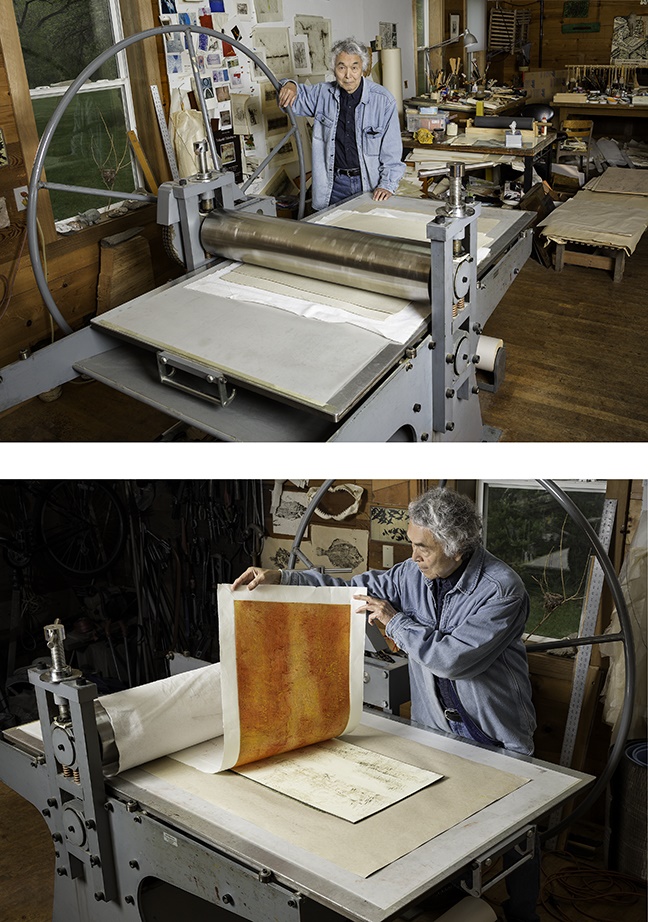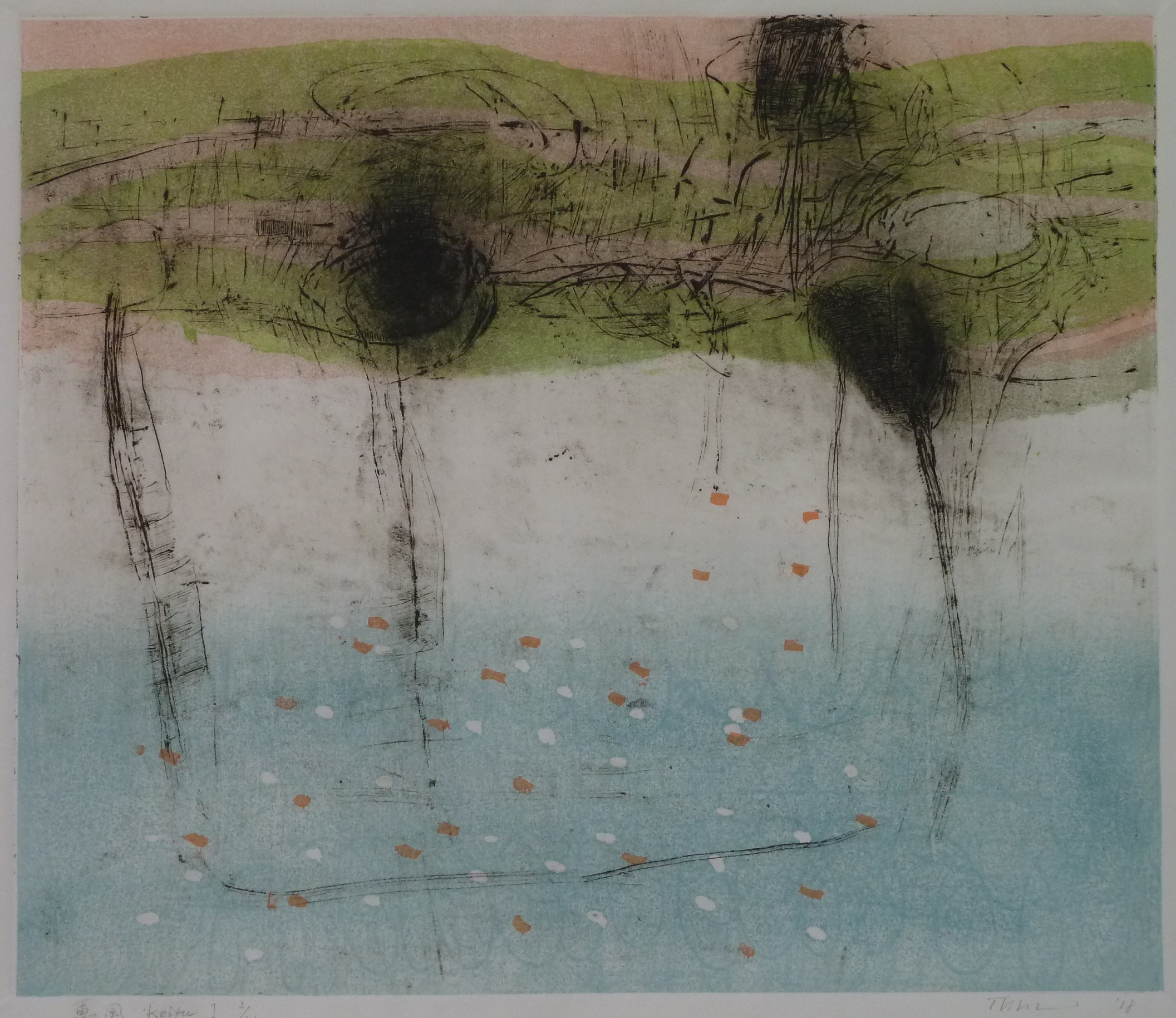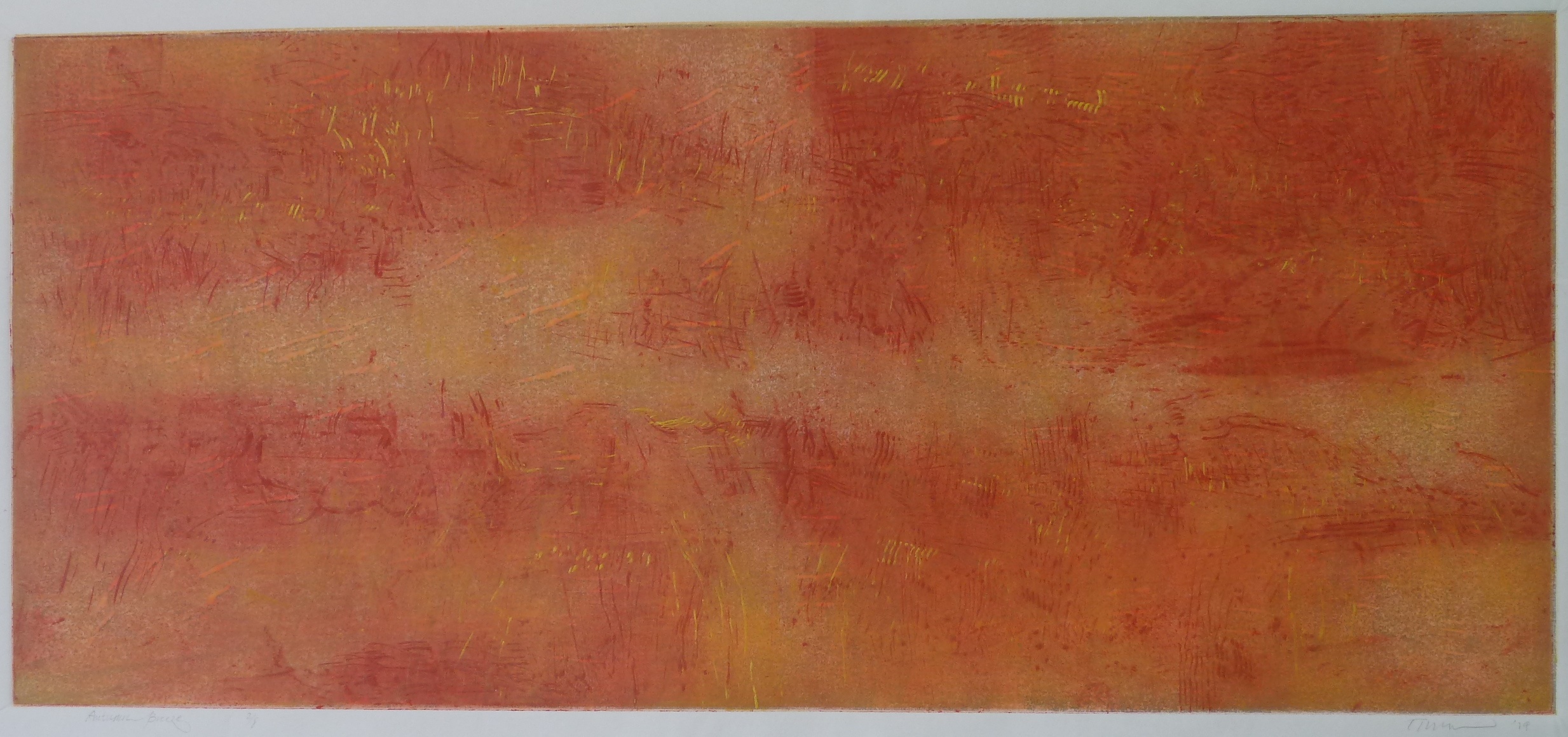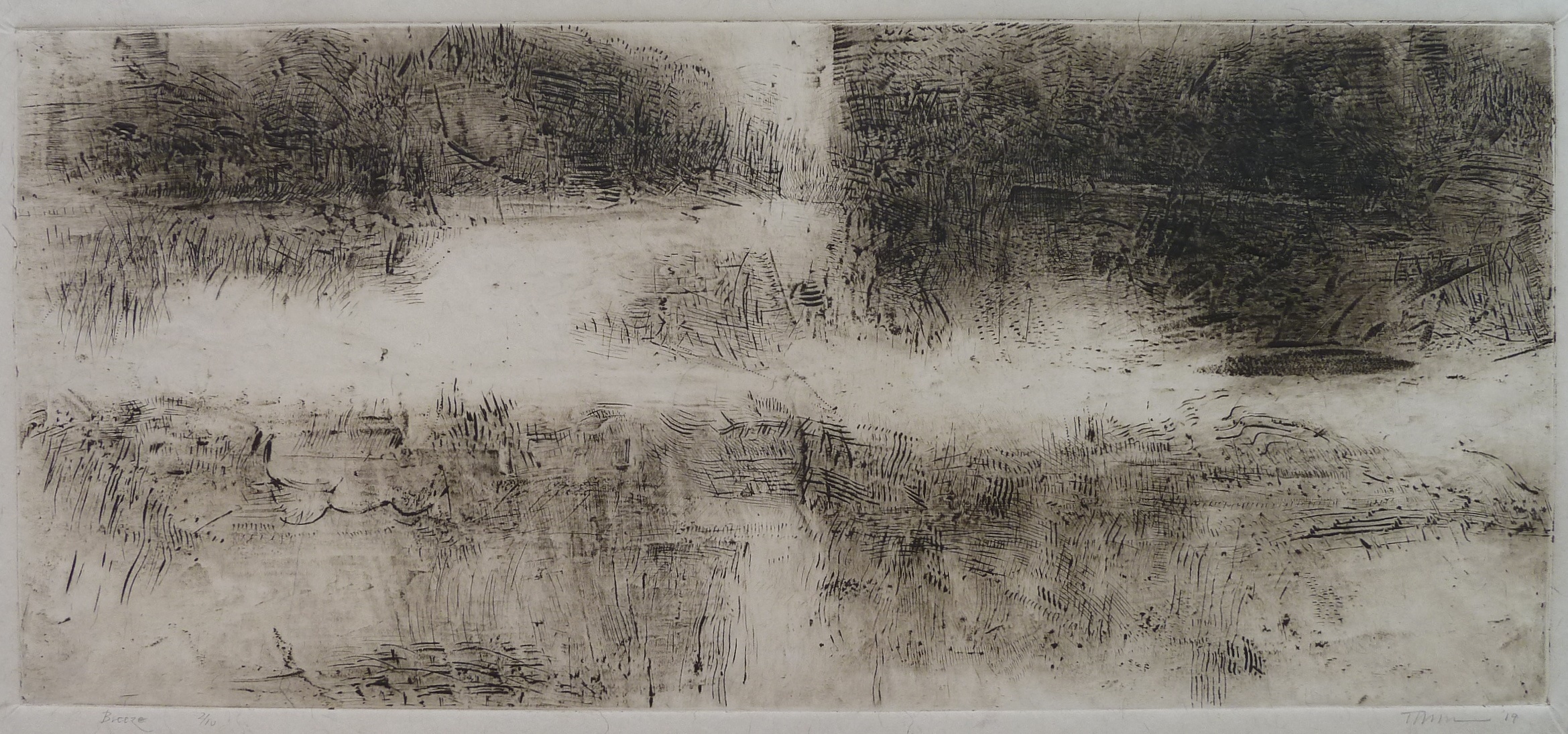Takeshi Takahara: poems to the winds
The new show at WSG is a body of work Takeshi Takahara has been developing from 2018-present. The work is at once ephemeral and grounded – a solid body of work exploring his chosen media and techniques. Our usual blog post when we change shows is a more direct interview. However, this time, it is a recounting of a conversation between Takahara and myself.

Takahara printing diptych, photos courtesy of John Lilley
Takahara uses both woodcut and intaglio techniques in this body of work. As a matter of fact, those are the methods of printmaking he uses most of the time. Printmaking, that is, hand-pulled prints, differ from what most of the general public thinks of as prints. When folks hear ‘prints’, they think of reproductions, giclees – NOT original pieces. Takahara’s form of printmaking yields ORIGINAL, small edition prints. Each of these prints will differ slightly, according to ink application on the plates, pressure of the press, placement of the paper. The artist makes every one of these pieces by hand.
About 4 years ago, he began experimenting with a form of intaglio (pronounced in-TAL-e-o) that he developed out of the desire to get away from using toxic chemicals used in the traditional, etched copper-plate intaglio technique. He uses a sheet of plywood (the plate) and applies spackle to it, sometimes drawing lines into the spackle while it’s wet, sometimes waiting until it’s dry. In his pieces, the broader areas of color and tone come from printing the woodcut plates (sheets of wood that have been carved into), while the finer lines and details come from printing the intaglio plates.

Keifu, woodblock and intaglio (inspired by floating lotuses)
He explained to me that after he gets the image he wants in the intaglio plate, he then seals it with polyurethane so it will not be porous and soak up all of the ink. He will print an artist’s proof (first print from the plate) to see if he has the image/markings he wants and if he is happy with it, it is good to go in the printmaking process. If he feels like it needs work, he sands down the area he wants to amend, reworks it by making marks and, perhaps, applying more spackle, then drawing into it, re-seals it and prints it again. Takahara says this process is similar to when he used to print copper plates, because he had to sand down areas of the copper plate to get back to a fresh, smooth working surface. But the copper plate required more passes with sanding and burnishing to get a fresh surface.
Printmaking is a fascinating art-making method. As an artist, you go into a project with an idea of what you want to happen, but with printmaking, everything comes out backward – the image you draw into the plate on the right comes out on the left when you print it. It is hard to imagine exactly how it will look until you print the artist’s proof. So even though you go into a project with a plan, you need to allow some space for magic to happen along the way. And each color that the artist wants in the final piece requires a separate pass, if not a separate plate, through the printing press. For example, in Keifu (above) Takahara used 3 separate woodcut plates for the colors alone – the blue, lime and melon colors. Now, when they are layered over each other, they create another tone, which is a bonus. Then, for the dark lines, he used the intaglio plate for his last pass through the press.

Autumn Breeze, woodcut and intaglio
For this show, Takahara printed pieces with the four seasons in mind. So you’ll see colors and marks emulating the personalities of the seasons. Here in Michigan, we have a full-on four season extravaganza. And sometimes, we have all four seasons in one day! The images of these last 2 pieces, Autumn Breeze and Breeze, are great examples of it – the same imagery printed in different colors. Think of the woods you drive past in spring and how it looked a few weeks before, with snow blanketing the branches and dried plant matter. The piece seems much more abstract in the Autumn rendition, but in the monochromatic ‘Breeze’ version, the structure of the landscape becomes much more apparent. It’s not unlike that spring version of the woods, when the leaves are all filling in, covering the bare structure of the land’s contour and the trees.

Breeze, woodcut and intaglio
Takeshi Takahara’s ‘Poems to the Winds’ opens with a reception on June 14, 7-9 pm and runs through July 21, 2019. WSG is open during Ann Arbor’s Art Fairs – come visit us!